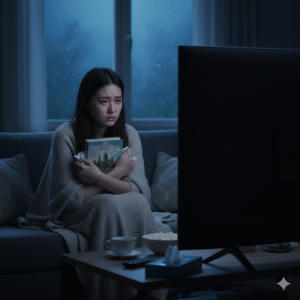Mumbai – 2025
For decades, mainstream Hindi cinema followed a reliable blueprint: a central male hero, surrounded by a supporting cast that existed to serve his emotional or physical arc. His presence determined the film’s budget, its box office projections, and even the poster design. But today, that equation is beginning to change.
A growing number of Indian films and series are moving away fromsingle-hero dominance, opting instead forensemble narratives—where the story isn’t told through one point of view, but built around multiple characters, each with distinct stakes.
This isn’t a stylistic trend. It’s a structural shift.
The Reasons Behind the Shift
1. Audience fatigue with one-note storytelling
Viewers are increasingly aware when a film is padded around a lead actor. Films that rely solely on a protagonist’s charisma without narrative support—especially in OTT-heavy environments—struggle to hold attention. Today’s audience expects substance, not just screen time.
2. The OTT format has retrained viewers
In long-form series likePaatal Lok,Delhi Crime, andRocket Boys, viewers have embraced character networks that evolve slowly. This has carried over into cinema, where even a two-hour film now needslayers, parallel arcs, and tonal balance.
3. Writers’ rooms are driving structure
Unlike earlier, when a single screenplay writer would stretch a linear plot around a hero, today’s writers’ rooms are collaborative. Ensemble writing isnarratively practical—it allows for pacing shifts, tension pivots, and realism.
4. Production economics are recalibrating
With rising actor fees and fragmented audiences, producers now hedge risk by splitting visibility across multiple actors. A story withfive recognisable names on the poster, each pulling a different kind of audience, is a safer bet than depending on one star alone.
Key Examples from Recent Indian Projects
- Kapoor & Sons: Each character—grandfather, parents, sons—had defined, narratively crucial arcs.
- Darlings: Though Alia Bhatt headlined, the narrative weight was distributed evenly with Shefali Shah and Vijay Varma.
- Thappad: Even in a film about one woman’s decision, the story built context through sub-characters, making it collective.
- Panchayat, Mumbai Diaries, Kohrra, Jubilee: All driven by ensemble weight, not single faces.
This model is especially visible in regional industries, wherestar culture hasn’t entirely monopolized storytelling. Malayalam cinema, in particular, has embraced ensemble narratives for over a decade.
The Gains
- Better writing: Subplots demand real depth, not filler
- More opportunities: Character actors, theatre-trained talent, and OTT faces are being absorbed meaningfully
- Realistic storytelling: Modern Indian life isn’t lived through one perspective—cinema is finally reflecting that
The Roadblocks
Despite creative progress, certain habits persist:
- Marketing still fixates on lead actors
- Budgets often remain dependent on a “bankable face,” even in multi-character stories
- Ensemble casts can create internal imbalance—in pay, credits, and public attention
- Award functions often ignore ensemble structure, forcing narratives into “lead vs. supporting” categories
Why This Shift Matters
The movement toward ensemble storytelling is not about political correctness or trend-chasing—it’s aboutnarrative efficiency and honesty. It recognises that:
- Conflict in modern life is collective
- Perspective in cinema should be shared
- The most powerful stories aren’t told through dominance, but through distribution
If the last decade was about chasing larger-than-life heroes, the next one may be about returning tostories built around lives, not just legends.











